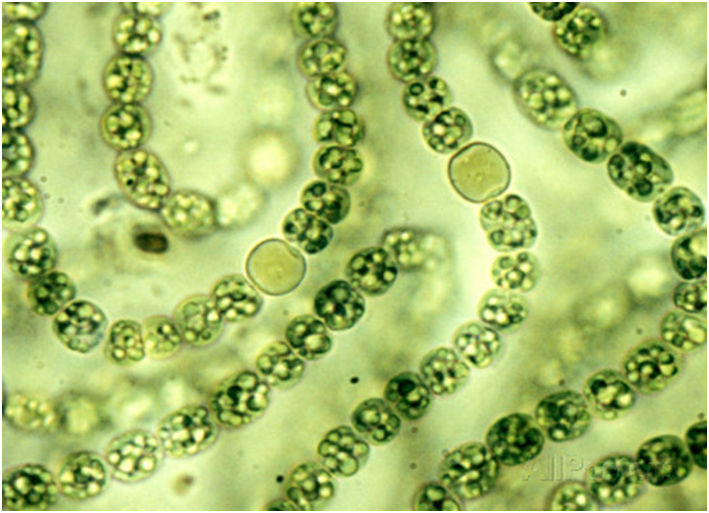Oxygen gas (molecular oxygen, with the chemical formula O2) currently occupies approximately 21% of the volume of the Earth's atmosphere, but this was not always the case.
In fact, we now know that O2 was residual in the atmosphere that existed on Earth before life appeared, about 3,6 billion years ago.
It was only with the development of the first unicellular beings capable of carrying out photosynthesis, the cyanobacteria, that oxygen gradually began to be released into the atmosphere, giving it an oxidizing character.
Cyanobacteria, unicellular beings that have a blue-green color and that normally associate with each other forming filamentous colonies, are the oldest known living beings that left us fossils and that continue to exist today, and can be considered as the "architects" pioneers in the composition of the present Earth's atmosphere.
Photosynthesis is the process by which plants, algae and some bacteria use the energy of sunlight to convert carbon dioxide (CO2) and water (H2O) into sugars. In this process, oxygen gas is formed, which is “expelled” into the atmosphere as a photosynthetic residue.
The biochemical evolution of photosynthesis was an event that changed planet Earth forever. In fact, it is terribly ironic that plants, which produce O2, are victims of fatal and destructive fires, only possible because this gas, which exists in the atmosphere because of them, insatiably fuels their combustion!
The gradual increase of O2 on Earth also allowed a greater “fixation”, in the Earth's crust, of various substances in the form of oxides.
In fact, it was through the discovery that ferric oxide (Fe2O3) began to be present in geological strata formed only at a certain point in the Earth's history, that scientists found that there must have been an earlier time when O2 was scarce in the Earth. atmosphere.
Likewise, limestone rocks only started to be formed after the increasing production of O2, first by unicellular photosynthetic beings and later by the plants that evolved from them.
The progressive increase of O2 in the Earth's atmosphere allowed the generation of another gas composed of three oxygen atoms: ozone (O3). This gas, which is toxic to living beings, forms a layer in the atmosphere known as the ozone layer which, despite being only about three millimeters thick, is capable of filtering ultraviolet rays from sunlight that are very harmful to people. living beings.
Indeed, the increase in O2 in the Earth's atmosphere had implications not only for the evolution of our eukaryotic ancestors, capable of breathing through the use of available O2, but also for their protection, through the ozone layer, from dangerous ultraviolet radiation. Otherwise, life probably would not have evolved into what we know today and the author of these lines would not be writing them!
The biogenic production of O2 has profoundly influenced the history of planet Earth!
Author Antonio Piedade
Science in the Regional Press – Ciência Viva



















Comments